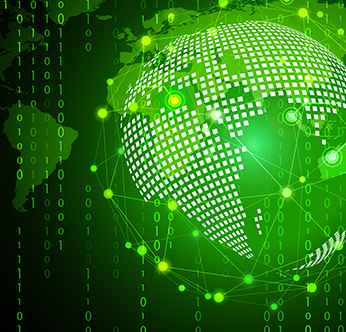
Toward a Greener Planet Through IoT: April 2023, 22nd Edition
As we navigate a world that is becoming increasingly interconnected, we must prioritize sustainability and circular economy in our approach to innovation. The industrial Internet of Things (IIoT) has opened up a world of possibilities for connectivity and automation, but it also plays a key role in creating a more sustainable future.
The goal of this edition is to illustrate this key role through specific examples:
- We start with “Green IT: A 360-Degree Scan of Current Research, Projects and Initiatives” by Yannic Schlimpen, M.Sc., Fraunhofer Institute for Communication, Information Processing and Ergonomics (FKIE). The topic of Green IT deals with sustainable and energy-efficient IT solutions. Like IT, Green IT is an extremely broad subject area that needs to be surveyed. This article provides an overview of the current state of Green IT research and makes it easier for interested parties and newcomers to get started.
- Next is “Achieving a Sustainable Economy with Digital Product Passports” by Kym Watson, Ph.D., Florian Patzer, Dr. -Ing., Felix Schöppenthau, M.Sc., and Boris Schnebel, Dipl. Inform., Dipl. -Ing. -Päd., Fraunhofer IOSB. The digital product passport is an emerging technology within a digital ecosystem that tracks and monitors product properties throughout business processes in a sustainable economy. This article guides implementing and managing Digital Product Passports in a supply chain network that aims to achieve a sustainable economy.
- That is followed by “Decentralized Review System for Transparent and Accountable Governance” by Rhul Kumar, Keelisetti Lokesh, and Satya Bhagawan Srikakolau, Indian Institute of Technology Indore; and Gourinath Banda, University of Southern Denmark. This article presents how blockchain was engineered with encryption, resulting in an accountable-transparent-trusted review system independent of owners and providers of the businesses that deliver such goods and services. The Solana Blockchain and IPFS are utilized.
- The next example is “Leveraging IoT and Blockchain Technology to Automate Risk Management for Nautical Vessels,” by John Paul Bassett Zable, Ahoy. During hurricanes, boats become dangerous pollution vectors costing owners, insurance companies, and the environment dearly by leaving oil, gasoline, fiberglass, and shrapnel in their wake. This article addresses the deployment and benefits of IoT and Web3 technology to automate risk management protocols that keep boats and the environment safe.
- Next is “BlockBill: The Blockchain-Powered Paperless Billing Solution” by Bhoomil Gohel, Neel K. Parikh, and Niyati Totala, Indian Institute of Technology Indore; and Gourinath Banda, University of Southern Denmark. This article describes a billing system that uses blockchain technology to eliminate paper usage to address environmental concerns while tackling issues of tampering and trustworthiness.
- That is followed by “Prediction and Prevention of Wildfires,” by Thenatchi Kamanthenu and Sandeep Dayal, IBM. The authors describe efforts underway to predict and prevent wildfires, then propose a solution for preventing wildfires caused by powerlines through IoT sensors, drones, and predictive analytics.
- We wrap up with “Digital Transformation Value Indicators for a Sustainable and Circular Economy” by John Perrigue, Bassam Zarkout, and Tom Doney. This piece examines how digital transformation and sustainability initiatives are interrelated and how smart factories can achieve business and environmental outcomes. It also introduces the concept of smart operations, which covers planning, logistics, product design, and procurement, as another key element of sustainable manufacturing.
We hope these examples give you a heightened perspective on how to work together to prioritize investment in green technologies and eco-friendly practices to create a better future.
We welcome your feedback on this edition and are interested in what you want to be covered in future editions. The theme of our next edition will be “The Role of IoT in Shaping the Future of Supply Chain.” Stay tuned!